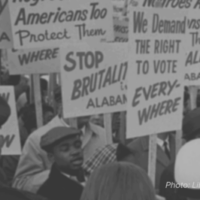New York Governor Andrew Cuomo’s proposal to gradually raise the minimum wage to $15 per hour statewide will boost wages for nearly 3.2 million workers by an average of 23 percent by mid-2021, with no negative effect on overall employment, according to a new study by economists at the University of California, Berkeley. The study shows the governor’s $15 minimum wage plan raising earnings for 37 percent of the state’s workforce.

The legislature in New York is expected to take up the governor’s proposal in the coming weeks. It would raise the minimum wage in stages from its current $9 per hour to $15 by 2019 in New York City, and to $15 in the rest of the state by mid-2021.
The UC Berkeley study was based on a new model for evaluating the economic and labor market effects of higher value minimum wage increases in specific locales, and is the most comprehensive research study of the effects of the $15 plan in New York. The researchers say their model can be adapted to other proposals, such as a similar $15 minimum wage plan which Californians may vote on in November.
In New York, the $15 minimum wage plan “will have large positive effects on living standards,” the UC Berkeley researchers said.
“Looking at the entire picture, the gains for low-wage workers are significant and a higher minimum wage means a more widely-shared prosperity in New York,” said Michael Reich, the study’s lead researcher. “We looked carefully at both sides of the equation, the effects on businesses and the effects on workers. Businesses will adapt,” Reich said. “Efficiencies and turnover saving will offset a good part of the wage increases and modest prices increases – spread across all consumers – will cover the rest. The increased consumer spending from the higher wages will generate more business and jobs.”
The study also found:
- For those receiving higher wages, annual pay will increase $4,900 a year on average (in 2015 dollars), boosting consumer spending.
- Three industries account for nearly half of the workers getting increases: retail (18 percent), health care and social assistance (16 percent) and restaurants (14 percent).
- Overall payroll costs in the state will increase by only 3.2 percent, since many businesses already pay over $15 and many workers getting a raise already earn over $9, the state’s current minimum wage. Also, labor costs average one-fourth of business operating costs.
- Businesses will experience lower employee turnover, generating savings in recruitment and retention costs that will offset about one-eighth of the higher payroll costs. Worker productivity will also increase.
Today, a group of more than 75 New York economists endorsed the study’s findings and Cuomo’s $15 minimum wage proposal. The economists explained that the “methodology used in the Berkeley study is straightforward and appropriate in modeling the impacts on businesses” and the state’s economy. “Gov. Cuomo’s proposal is a well-designed plan that phases-in the higher wage over time, and with consideration for the different economies Upstate and in New York City,” they added. “Outside of New York City, annual increases would be 10 percent or less, well within the range of most minimum wage increases.”
At the state capitol in Albany, the Democratic-controlled Assembly supports the governor’s $15 minimum wage proposal, but it faces opposition so far from Republicans who control the State Senate. A recent New York Times editorial urged Senate Republicans to stop “playing politics” and agree to enact the proposal, warning that if they failed to do so they could “pay a steep political price.” Polls in New York State have shown very strong support from voters for Gov. Cuomo’s $15 minimum wage plan.




